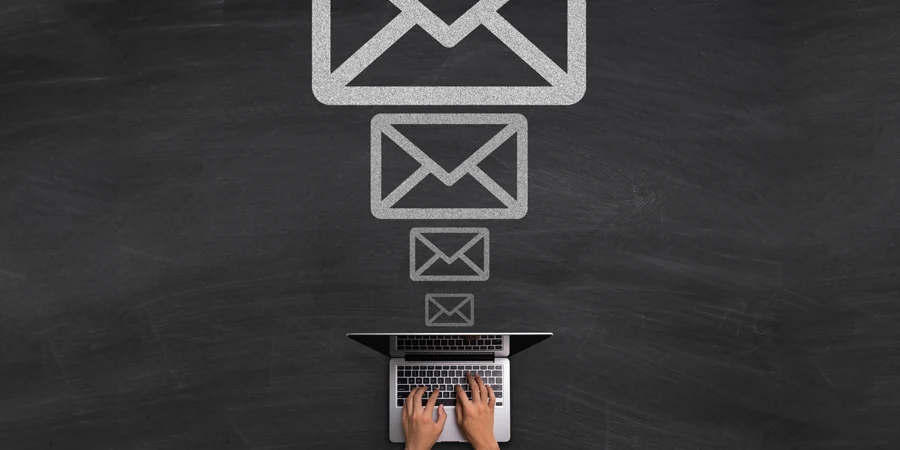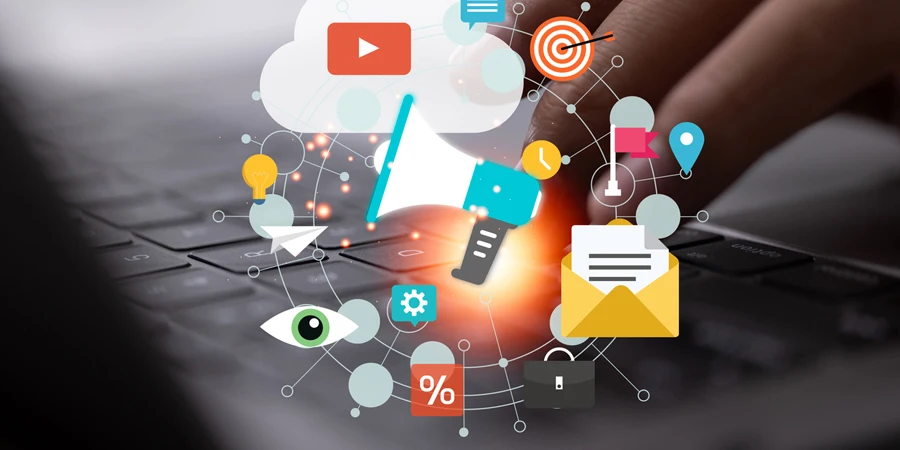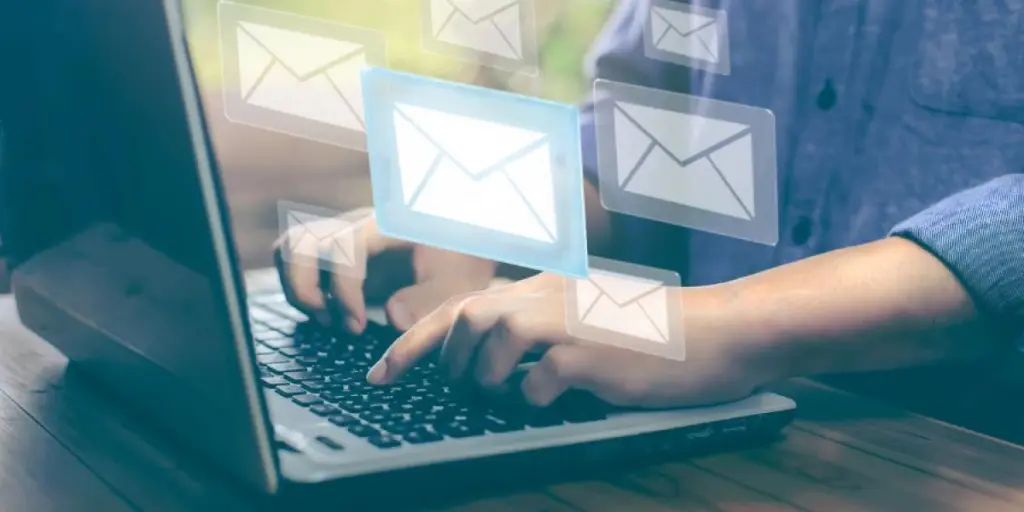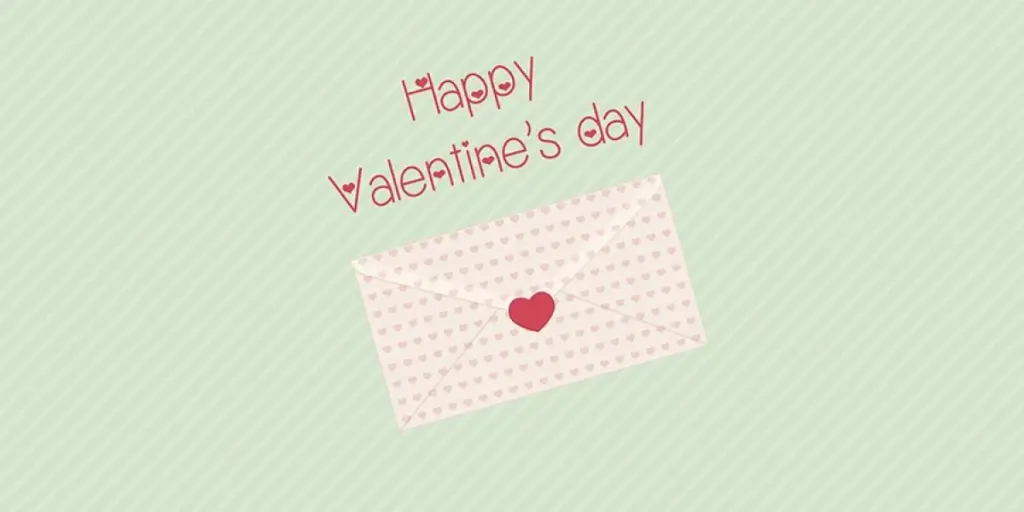Table of Contents
1. What is email introduction?
2. How to write an introduction email?
3. Email introduction examples
4. Introduction vs welcome email
5. Wrap up
Writing a great introduction email is an important skill to hone. They can lead to sales meetings, new jobs, and expansion of your professional network.
In this guide, we’ll look at different kinds of introduction emails including formal, casual, referral, and informational messages. We’ll also show you how to customize each one for maximum impact.
What is email introduction?
An email introduction is the initial correspondence you send to someone new. It’s a way to start a working relationship. It tells the other person who you are, why you’re writing to them, and what you want to happen next, allowing you to start on the right foot.
How to write an introduction email?
To write a great introduction email, you need to understand your reader. Use a brief, engaging subject line. Start with a formal greeting if you don’t know them well, and mentioning a mutual connection can build rapport. Your goal is to grab their attention and make them want to read more.
Subject line: Concise and relevant
The subject line of the email is the first thing people see. It can make them want to read your message or not. Here are some examples of good subject lines:
- Introducing myself and my company
- Quick question about your business
- Mutual connection – (Name) suggested we connect
- Opportunity to collaborate on (Project/Initiative)
Greeting: Polite and personalized
The email greeting is very important as it sets the tone for the whole message. Here are some tips:
- Use the person’s first name and a comma, like “Hi Sarah,” if you know them well
- For a more formal tone, use a title and their last name, such as “Dear Dr. Johnson”
- A warm greeting with their name shows you care about talking to them
Introduction: Name, position, reason for reaching out
Mastering the art of the email introduction requires striking a balance between clarity and brevity. This makes the rest of the message more effective.
Here are a few examples of strong email introductions:
- “Hi (Name), I’m (Your Name) and I work as the (Your Position) at (Your Company). I’m sending this because I read your content about (Their Industry/Niche). The way you (Specific Achievement/Insight) was genuinely impressive. (Value Proposition/Reason for Connecting).”
- “Hey there (Name), I’m (Your Name) and I started (Your Company). Our newly developed product, which (Product Benefit), has the potential to significantly transform (Their Company/Industry). I’d love to show you how it works and see what you think.”
- “Hi (Name), I hope things are going well. We talked briefly at (Event/Conference) a month ago. You said you wanted help with (Their Goal/Challenge). I have some thoughts that worked for other people in your field. Perhaps there’s an opportunity for collaboration.”
In these examples, the sender says who they are, what they do, and why they’re reaching out, right at the start. They show they know about the other person and want to give them something valuable — a compliment, a new product, or beneficial ideas. By striking a balance between friendliness and professionalism, these intros pave the way for a productive conversation.
Mutual connection: Mention if applicable
If you know someone who knows the person you’re emailing, it can help you connect with them. Here are some ways to use mutual connections:
- Ask your shared contact to introduce you. They can explain who you are and why connecting would be good.
- In your email, mention the person you both know. This shows you have something in common right away.
- Share something interesting you learned about them from your mutual friend. It shows you care about getting to know them.
Using mutual connections makes your email more personal and can make the other person more likely to reply and start a great new relationship.
Purpose: Clear and specific
When you write an email to introduce yourself, it’s important to say why you’re writing. This helps the other person understand what you want. Here are some reasons for sending an intro email:
- To ask for advice or help with something
- To see if they want to work on a project together
- To invite them to an event or meeting
- To tell them about a product or service that could help them
Make sure to explain your purpose in a way that’s easy to understand. Keep the email short and to the point.
Closing: Thank you, enthusiasm, polite closing
In the final words of your email, take the time to express your heartfelt appreciation. How you end your email can have a real impact on the likelihood of your recipient replying to you. Consider using these impactful closing phrases:
- Thanks so much!
- Talk to you soon,
- Have an awesome day,
Choose an ending that aligns with the tone and objective of your email. A well-crafted closing is the perfect final touch to a thoughtfully composed initial email.
Signature: Full name, job title, contact information
Email signatures are an important part of talking to people online. They quickly highlight who you are and how to reach you.
Put these things in your signature:
- Your full name
- Your job title
- The company you work for
- Your phone number
- Your email address
Embrace simplicity when crafting your signature: use a clean style with the same font and colors as your company’s brand, and limit the content to no more than a handful of lines.
Email introduction examples
Saying hello to someone new can be a stressful task. But if you’re thoughtful, you can succeed in getting the engagement you want from your target recipient. Start by greeting them warmly and friendly. To help them feel connected to you immediately, find something you both like and genuinely talk about it.
Explain your reason for writing in an exceptionally clear way. Keep your message concise but engaging, and tailor it to the recipient. Review your email carefully to ensure no errors could reflect poorly on you. Use impactful language and follow these steps to increase the chances of your email being read and responded to promptly.
1. Formal introduction
You might need to send a formal email when you meet someone new at work, like a boss or coworker. It’s important to make a good first impression so be polite and professional. Tell them who you are and why you’re writing.
Here’s an example of a formal introduction email:
Subject: Introduction – John Smith
Dear Ms. Johnson,
I hope you’re doing well. My name is John Smith, and I’m a new marketing manager at ABC Company. I want to introduce myself and say I’m excited to work with you on upcoming projects. Please let me know if you’d like to meet sometime to discuss our team’s goals.
Thank you,
John Smith
Marketing Manager
ABC Company
john.smith@abccompany.com
555-123-4567
2. Casual introduction
A relaxed email is a great way to kick off a relationship if you meet someone awesome at a professional meetup or through a friend and want to follow up on the meeting. It’s like waving hello through the internet.
Here’s a sample casual intro email:
Hey (Name)! It’s (Your Name). We chatted at (Event) last week. I loved your thoughts on (Shared Interest). Want to grab coffee next Tuesday at 3 pm? I’d enjoy hearing more about your experiences with (Topic). If another day works better, just let me know. Looking forward to it! Cheers, (Your Name).
3. Introduction with a mutual connection
You might need to send an email like this if someone you know thinks you should talk. They believe the other person can help you with something you’re working on. Here’s an example:
Sarah Thompson said great things about you and thought we should meet. I work with her at ABC Solutions. You seem to know (Relevant Field), and I’m currently doing a project about (Relevant Project or Initiative). Could we talk on the phone or get coffee to discuss it? I’d love to hear what you think. Does (Date/Time) or (Date/Time) work? If not, let me know a better time. Thanks for considering this. I’m excited to learn from you!
Best,
(Your Name)
(Your Contact Information)
4. Introduction for networking purposes
You might send a networking email when you want to meet people in your field. It can help you find a job, get advice, or work together. A good networking email will make the other person want to write back.
Subject: I love your work, (Name)
Hi (Name),
I really enjoyed your presentation at (Event) on (Topic) — you had a lot of thought-provoking points!
I work as (Job Title) at (Company) and I think it’s always nice to meet other people in the field. If you’re available, I’d love to buy you a coffee and talk more about (Subject).
All the best,
(Your Name)
(Your Contact Information)
5. Introduction for business proposal
You might send a business proposal email when you see a chance to work together on something. It’s a way to show the other company how you can help them out. Here’s an example:
Subject: Boosting Acme Inc.’s Online Sales
Hi John,
I’m reaching out because my team at XYZ Marketing has some ideas for improving Acme’s digital marketing. We’ve helped lots of companies like yours increase online revenue.
Our plan focuses on optimizing your website, running targeted ad campaigns, and leveraging influencer partnerships. This multi-pronged approach has driven sales growth of 50%+ for our clients.
As a leading digital agency with 10+ years of experience, we have the expertise to deliver real results. Our work has won numerous industry awards.
I’d love to discuss how we can help Acme achieve its goals. Let me know if you’re interested in connecting.
Thanks,
Jane Smith
XYZ Marketing
6. Introduction for collaboration opportunity
When you spot a chance to work with another company that could help you both, it’s time to send a collaboration email. Make it personal and point out what they’ve done that caught your eye, and how teaming up could be good for everyone.
Subject: Let’s Team Up!
Hi (Name),
I’m (Your Name) from (Company). We love your awesome work in (Industry/Field). I think if we put our heads together, we could do some great things:
– (Idea 1)
– (Idea 2)
– (Idea 3)
Want to hop on a quick call next week to talk about it?
Let me know!
Thanks,
(Your Name)
(Title),
(Company)
7. Introduction for job application
When you find a job matching your skills and goals, you must send a great introduction email. This email should make you stand out. It should show why you’re the best person for the job.
Here’s an example of a job application email:
Dear (Hiring Manager’s Name),
I’m excited to apply for the (Job Title) position at (Company Name). I saw the job posting on (Website/Platform) and believe my experience aligns perfectly with the role’s requirements.
As a (Current/Previous Job Title) at (Current/Previous Company), I have developed strong skills in (Skill 1), (Skill 2), and (Skill 3). In my current role, I (Key Achievement), demonstrating my ability to (Relevant Skill).
I am thrilled about the opportunity to bring my skills and experience to (Company Name). My (Relevant Qualification) would be a valuable asset to your team.
I would welcome the chance to discuss my qualifications further in an interview. Please let me know if you need any additional information.
Thank you for considering my application. I look forward to the possibility of joining your team.
Best regards,
(Your Name)
(Your Contact Information)
8. Introduction for seeking advice or mentorship
When you need help with a problem or want to get better at something, finding a smart person to give you advice can make a big difference. You have to write a really good email to get them to be your mentor. Explain who you are and why you’re writing to them.
Here’s an example of what you could say:
Subject: Learning from the best!
Dear (Mentor’s Name),
I’m (Your Name), a (Your Job) at (Company). I love your work and how you’ve helped people.
I would like to ask if you would be my mentor? I want to get better at (Skill 1), (Skill 2), and (Skill 3). You’d be great because you know so much about (Topic).
I’d work hard and make you proud. Can we talk more about this? Let me know when works for you.
Best,
(Your Name)
(Your Email and Phone)
9. Introduction for sales pitch
You send a sales pitch email when you find someone who might want what you sell. It’s a way to start talking and maybe make a sale. To write a good one, learn about their business and what’s hard for them. Then, show how your product can help.
Subject: Hey (Name), make your team’s work easier with (Product)
Hi (Name),
I saw your team is growing. That’s great! But more people can mean more hassle. Our tool, (Product), helps teams work together better and get more done faster. Want to see how it could help you? Let’s talk for a few minutes next week if you can.
Thanks,
(Your Name)
10. Introduction for partnership opportunity
You might email a partnership opportunity if you find someone who could work well with your business, such as if their products or services might go nicely with yours. The important thing is to explain how the partnership would help each of you.
Subject: Chance to Work Together
Dear (Recipient’s Name),
I hope you’re doing well. I’m (Your Name), the (Your Role) at (Your Firm). We’ve been watching the great work your team at (Recipient’s Company) has done in (Relevant Industry/Field). We think our companies could help each other in important ways.
Specifically, I think we could:
(Opportunity 1)
(Opportunity 2)
(Opportunity 3)
If our groups worked together, it could be very helpful for our businesses, the people we work for, and the places we live and work. I’d like to set up a short phone call to discuss this and see if working together could benefit both of us. Please let me know if you have time for a quick talk next week.
All the best,
(Your Name)
(Your Title)
(Your Firm)
Introduction vs welcome email
Introduction and welcome emails serve distinct purposes for different audiences. Welcome emails greet new subscribers immediately after they take an action — such as making a purchase or joining your newsletter. A welcome email contains information that’s relevant to their action, for instance confirming their order, or letting the recipient know what they’ve signed up for and how often they’ll receive an email.
Introduction emails, on the other hand, are individual emails sent to a specific recipient. They are created and sent manually, and should be highly personalized to the recipient and situation.
Wrap up
An effective introduction email is key for making positive first impressions and building relationships. The most important things to remember are to:
- Craft a concise, relevant subject line that grabs attention
- Start with a polite, personalized greeting
- Introduce yourself, your position, and your reason for reaching out
- Mention any mutual connections you share
- Clearly state your purpose for writing
- Close with a thank you, show enthusiasm, and use a polite sign-off
- Include your full name, job title, and contact information in your signature
Following these tips and looking at introduction email examples for various situations, you can write compelling emails that get opened, read, and responded to.
Source from Omnisend
Disclaimer: The information set forth above is provided by omnisend.com independently of Alibaba.com. Alibaba.com makes no representation and warranties as to the quality and reliability of the seller and products.








